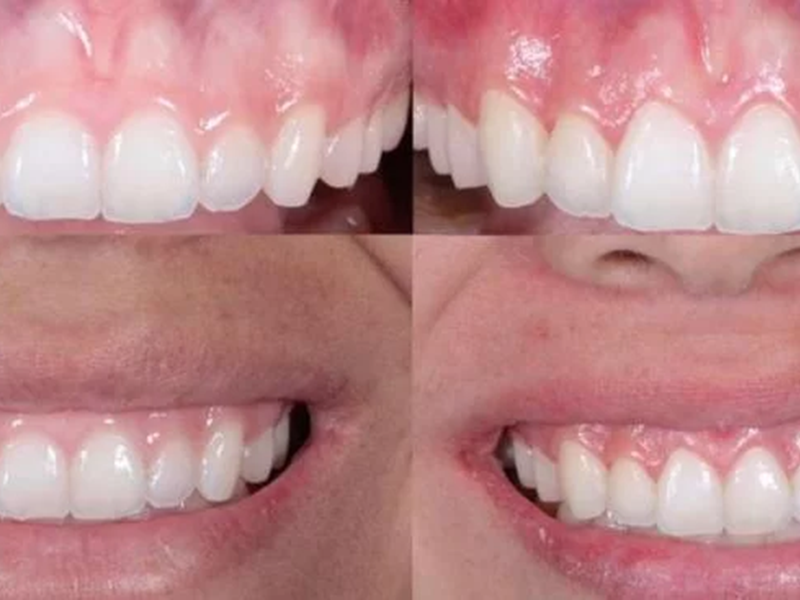Crown lengthening is a dental surgical procedure that involves the removal of gum tissue to expose more of a tooth’s structure. Typically performed for both functional and aesthetic purposes, this procedure can significantly enhance a patient’s smile or facilitate other dental work. If you’re considering crown lengthening, understanding what it involves, the reasons for the treatment, and the recovery process is essential. Here’s everything you need to know before undergoing crown lengthening.
What is Crown Lengthening?
Crown lengthening is designed to increase the visible portion of a tooth. It is often required when a tooth is too short for suitable restoration or when the excessive amount of gum tissue makes the teeth appear small—often referred to as a “gummy smile.” The procedure can be performed on a single tooth, multiple teeth, or even all the teeth in the smile zone.

Indications for Crown Lengthening
Crown lengthening can be recommended for various reasons, including:
-
- Restorative Needs: If your tooth structure is damaged or decayed below the gum line, crown lengthening can provide adequate exposure for dental crowns, fillings, or bridges.
- Restorative Needs: If your tooth structure is damaged or decayed below the gum line, crown lengthening can provide adequate exposure for dental crowns, fillings, or bridges.
-
- Cosmetic Improvement: If you have excessive gum tissue that creates a disproportionate smile, crown lengthening can help balance the aesthetics of your teeth and gums.
- Cosmetic Improvement: If you have excessive gum tissue that creates a disproportionate smile, crown lengthening can help balance the aesthetics of your teeth and gums.
-
- Preparation for Orthodontics: Sometimes, crown lengthening is necessary before braces or other orthodontic treatments to ensure that tooth structure is adequate for reliable adjustments.
- Preparation for Orthodontics: Sometimes, crown lengthening is necessary before braces or other orthodontic treatments to ensure that tooth structure is adequate for reliable adjustments.
-
- Gum Disease Treatment: In cases where gum disease has led to an abnormal gum line, crown lengthening can be part of a broader periodontal treatment plan.
The Crowning Procedure
Crown lengthening is typically conducted in a dental office under local anesthesia. The procedure may involve several steps:
-
- Consultation and Planning: Before the surgery, your dentist will evaluate your oral health, discuss your goals, and create a treatment plan tailored to your needs.
- Consultation and Planning: Before the surgery, your dentist will evaluate your oral health, discuss your goals, and create a treatment plan tailored to your needs.
-
- Anesthesia: Local anesthesia is administered to ensure you remain comfortable throughout the procedure.
- Anesthesia: Local anesthesia is administered to ensure you remain comfortable throughout the procedure.
-
- Incision: Your dentist will carefully incise the gum tissue around the affected tooth or teeth.
- Incision: Your dentist will carefully incise the gum tissue around the affected tooth or teeth.
-
- Tissue Removal: The excess gum tissue is removed to expose the desired amount of tooth structure.
- Tissue Removal: The excess gum tissue is removed to expose the desired amount of tooth structure.
-
- Suturing: The gums are then sutured back in place, and any necessary dressings are applied.
Recovery and Aftercare
Post-procedure recovery is important for ensuring a smooth healing process. Here’s what to expect:
-
- Initial Discomfort: It’s common to experience some swelling and discomfort following the procedure. Over-the-counter pain relievers can help manage any pain.
- Initial Discomfort: It’s common to experience some swelling and discomfort following the procedure. Over-the-counter pain relievers can help manage any pain.
-
- Dietary Adjustments: Soft foods are recommended for a few days after the procedure to prevent irritation of the surgical site.
- Dietary Adjustments: Soft foods are recommended for a few days after the procedure to prevent irritation of the surgical site.
-
- Oral Hygiene: Maintaining good oral hygiene is crucial for healing. Your dentist may provide specific instructions on how to keep the surgical area clean without aggravating it.
- Oral Hygiene: Maintaining good oral hygiene is crucial for healing. Your dentist may provide specific instructions on how to keep the surgical area clean without aggravating it.
-
- Follow-Up Visits: Regular follow-up appointments may be necessary to monitor the healing process and remove stitches if non-dissolvable sutures were used.
- Follow-Up Visits: Regular follow-up appointments may be necessary to monitor the healing process and remove stitches if non-dissolvable sutures were used.
-
- Timeframe for Healing: Most patients can expect a few weeks of initial healing, but full recovery can take several months as the gum tissue settles into its new shape.
Potential Risks and Considerations
While crown lengthening is generally safe, it carries risks like any surgical procedure. These may include:
-
- Infection
-
- Excessive bleeding
-
- Scarring of the gums
-
- Sensitivity in the treated area
-
- Aesthetic concerns if the gum line does not heal as expected
Be sure to discuss any concerns with your dentist, who can help you understand the risks in your specific case and how to minimize them.
Choosing the Right Dentist
The success of crown lengthening greatly depends on the skill and experience of your dental provider. Seek a dentist with specific expertise in periodontal procedures and a good reputation in your community. Ask about their training, experience, and before-and-after photos of previous patients.
Conclusion
Crown lengthening can be a transformative procedure, addressing both functional needs and aesthetic desires. By understanding the reasons behind the procedure, what to expect before, during, and after, and how to choose the right dental provider, you will be well-prepared for your journey to a healthier and more confident smile. Consult with your dentist if you believe you might benefit from crown lengthening, and pave the way for a brighter, more radiant you!